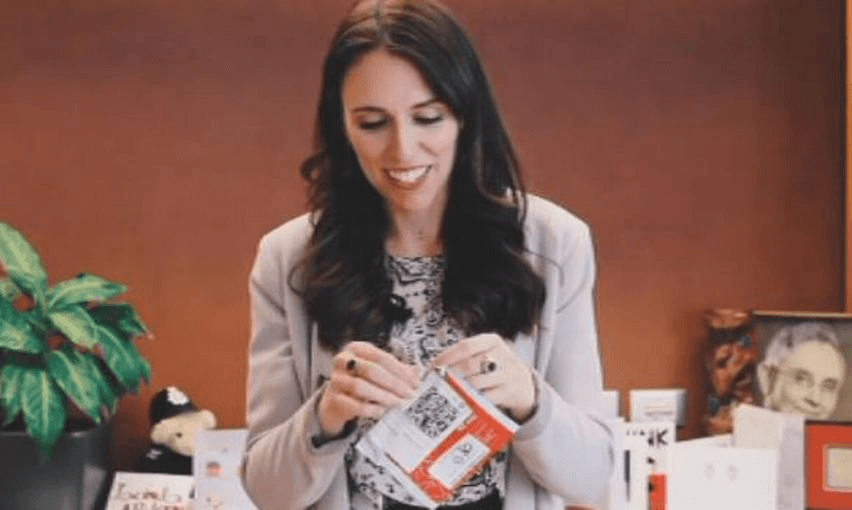Yesterday, NZ Post broke hearts by ending the Twitter Secret Santa game. Emily Writes asked Libby Greatnews – social media specialist for NZ Post / social elf for NZ Secret Santa – what happened.
Chances are if you’ve sent a message to the NZ Secret Santa Twitter account, the blue-haired delight Libby Greatnews has answered your tweet. Despite having many, many absolute dickheads message the account, Libby always replied calmly, painstakingly explaining that NZ Post wasn’t actually their Secret Santa and it wasn’t their fault if someone else on Twitter turned out to be a Dirtbag Santa.
I took part only once in the NZ Secret Santa game, but it was a joy. I received two beautiful illustrations of my babies which now take pride of place on my wall. I hit the jackpot getting @GiselleDraws as my Secret Santa. In return I made a calendar for the young woman I was given. She was obsessed with 5 Seconds of Summer, an inexplicably popular boyband. There was one boy in particular she loved so I made her a calendar with images of him I stole from Google, photoshopping her selfie-d face into each one. She was happy. I was happy. Merry bloody Christmas.
But all good things must end. Secret Santa is over. I asked Libby what happened, and what might happen in the future for the old Twitter Secret Santa.
How many years have you been involved in Secret Santa?
Three years, with two games of NZ Secret Santa under my belt. I was lucky enough to help coordinate the game with one of the people at NZ Post who had been a part of it since day one.
What was the best part of it?
Everyone opening their presents. I always loved seeing the thought, effort and creativity that went into buying for strangers you met over the internet.
And the worst?
Probably the last minute dash to get everything checked in and get people to get their presents sorted. There was a lot of logistics and gentle-but-stern telling off behind the scenes for Santas with poor time management.
Why is it ending?
Between resourcing and departure of key elf personnel, we aren’t able to give the game the full attention it deserves. We’re also focusing on being the best online delivery partner for New Zealand. We’re sad to see the game go, but we’re hoping to find a business to pass the torch on to in 2019.
How does it feel to not be doing it this year?
I’m very sad that we’re not doing the game this year. It was one of the highlights of my Christmas, which is saying a lot, because I’m one of those people who just really really really loves Christmas.
Is a part of you really happy because it seemed like SO MUCH WORK?
I will definitely miss the game and the people, but I will not miss the stress that went with it, that’s for sure.
How much work was it?
A lot. Like, A LOT. Hours and hours of logistics, co-ordination, comms to the community, soothing of worried Santas… One of our elf personnel would stay up until 2am replying to people almost every year. That said, it was absolutely 150% all worth it every time.
Were people mostly great or mostly dicks? It seemed like there were a lot of punishers – like people not sending presents and people bitching to you because they didn’t get presents.
99.5% community are great and a treat to deal with. You have the people who weren’t into the game or maybe didn’t take the commitment to it as seriously as they should have, but they’re the minority. The majority of people involved are positive forces in the Twitter community who do the game for the love of it, and I’m going to miss being a part of coordinating that.
What do you hope the future of Secret Santa will be?
I hope we can pass the torch onto a company who can give it the care and attention to detail the game deserves and maybe even expand it to other channels. Even if the game stays exactly the same as it is, I hope the community will still love it just as much and put in just as much effort, regardless of who runs it.

